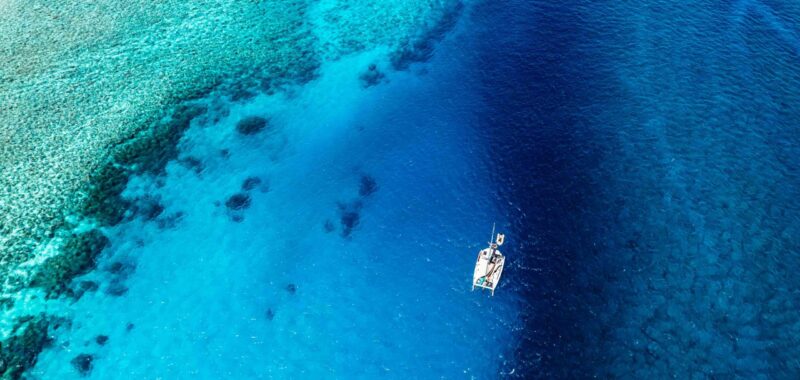If we zoom in on Scott Reef, we see that it’s actually two formations: The circular North Scott Reef and horseshoe-shaped South Reef. Just off the northwest tip of the southern reef, there’s a tiny sliver of sand, drolly named Sandy Islet. Its lunar surface is stippled with small craters. We’ll come back to those.
Like any natural feature in an open expanse of ocean, the reefs are teeming with life. They function not only as a localised ecosystem, but as a waypoint for migrations. Here, in staggering abundance, are 29 species of marine mammals, 41 species of birds and almost a thousand species of fish. There are sharks, rays, corals, sea snakes, and sawfish. Many of the creatures inhabiting these reefs exist nowhere else on Earth.
Each autumn, thousands of pygmy blue whales migrate north along the Western Australian coast, travelling from the cool waters of southern Australia to the Banda Sea in Indonesia. In spring, they migrate south again. The whales’ migration path takes them right past Scott Reef. Along these massive journeys, a handful of locations have been identified by scientists as Known Foraging Areas. One of them is the Scott Reef complex.
Without these places, the migration collapses.

